Expect vanadium prices to recover sharply in the next few months as buying returns to the market. Vanadium prices hit a peak of USD 140/kg in October 2018 with buying related to new Chinese regulations regarding specific grades of hardened steel. Prices for ferro-vanadium 80 percent FOB (China) hit USD 20.0/kg and USD 20.5/kg recently in Western Europe according to Fastmarkets MB. Many Chinese steel producers had been using quenching and tempering processes to harden steel, however this can lead to sudden catastrophic failure when the steel is overly stressed as may happen due earthquakes and subsidence.
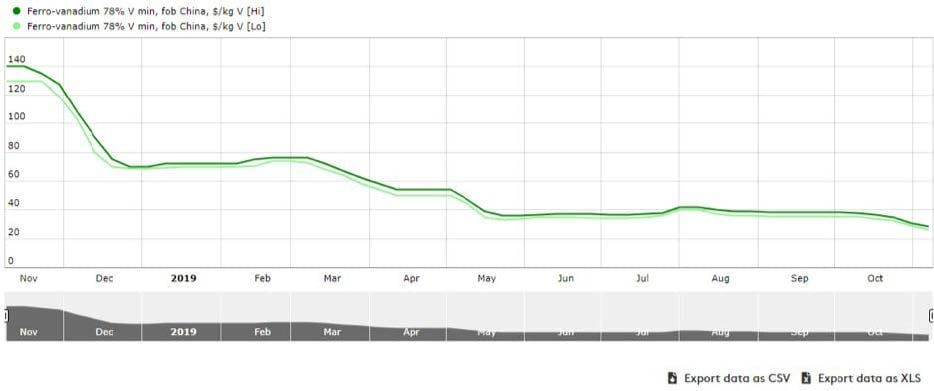
Vanadium in Steel
The new Chinese regulations require substantially more vanadium in the steel, driving demand higher. Unfortunately, higher vanadium prices, poor compliance in China, and substitution with niobium have caused demand to fall, with vanadium prices pulling back to USD 27.5/kgV in China and USD 20.25/kgV in Western Europe.
The leaching of some vanadium-rich tailings is seen as providing some temporary new supply to the market, though observers reckon this source should be worked through by the year-end.
Liquidity and Infrastructure
A lack of financial liquidity through 2019 combined with worsening sentiment relating to the US-China trade war has hit new construction and demand for strengthened steel products, causing buyers to hold back on vanadium purchases.
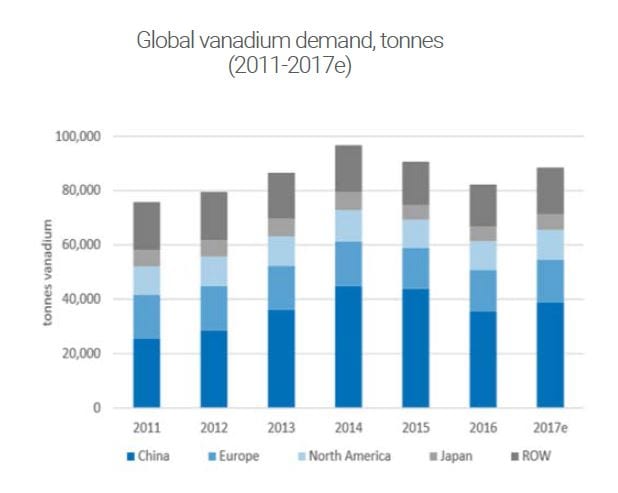
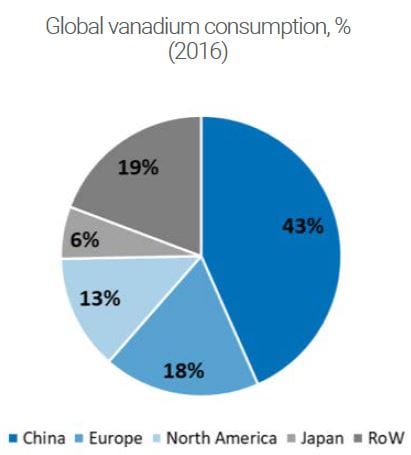
Infrastructure projects are the fastest way to restore economic growth. We expect new liquidity to come into the construction sector as policymakers work to restore confidence and reflate Western economic growth.
Chinese policymakers may also accelerate new belt and road projects and some other local infrastructure as they work to offset the negative impact of tariffs on the US. The good news is that China appears determined to enforce strict environmental and metallurgical compliance.
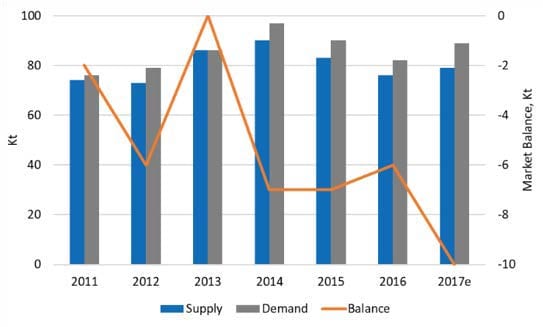
Environment regulations impact on Vanadium Production
Environmental controls have cut out secondary vanadium production from stone and the reprocessing of vanadium-bearing steel slag. Strict enforcement of vanadium content in key grades of steel should also drive new demand. China has restricted the use of lower-grade steel which will also drive demand for higher-grade vanadium-bearing steels.
New demand is also expected to come from Vanadium Redox Flow Batteries (VRFBs) which are aimed at supporting wind and solar power farms. The new green agenda at the World Bank is set to replace ageing coal-fired power generation with new renewable wind and solar plants which will need battery backup to ensure consistency of electrical supply. VRFBs are well placed to operate alongside and in place of lithium-ion batteries, which have generally lower energy capacity and shorter discharge timeframes but can discharge faster.
We suspect power networks will eventually incorporate a range of new power storage technologies with smaller lithium-ion batteries operating alongside much larger VRFB systems which are well suited to longer-term (8-hour) discharge.
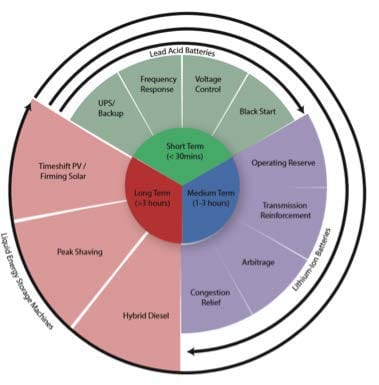
We forecast that VRFB demand in southern Africa alone could consume over 5 percent of global vanadium production over the next few years, creating significant new demand in a market where supply is relatively inelastic. If this trend is repeated in the US, China, and Europe, then we can predict new demand for vanadium easily outstripping supply in future years with grid developers queuing to secure available vanadium electrolyte supply.
The new availability of lease/rental financing for the vanadium in VRFB batteries should serve to offset the high cost of vanadium in the batteries, enabling the planning of more installations as vanadium comes available.
In conclusion, vanadium prices are down but definitely not out. The market is still digesting some new temporary supply at a time of slow buying activity, causing prices to fall further than would normally be expected.












